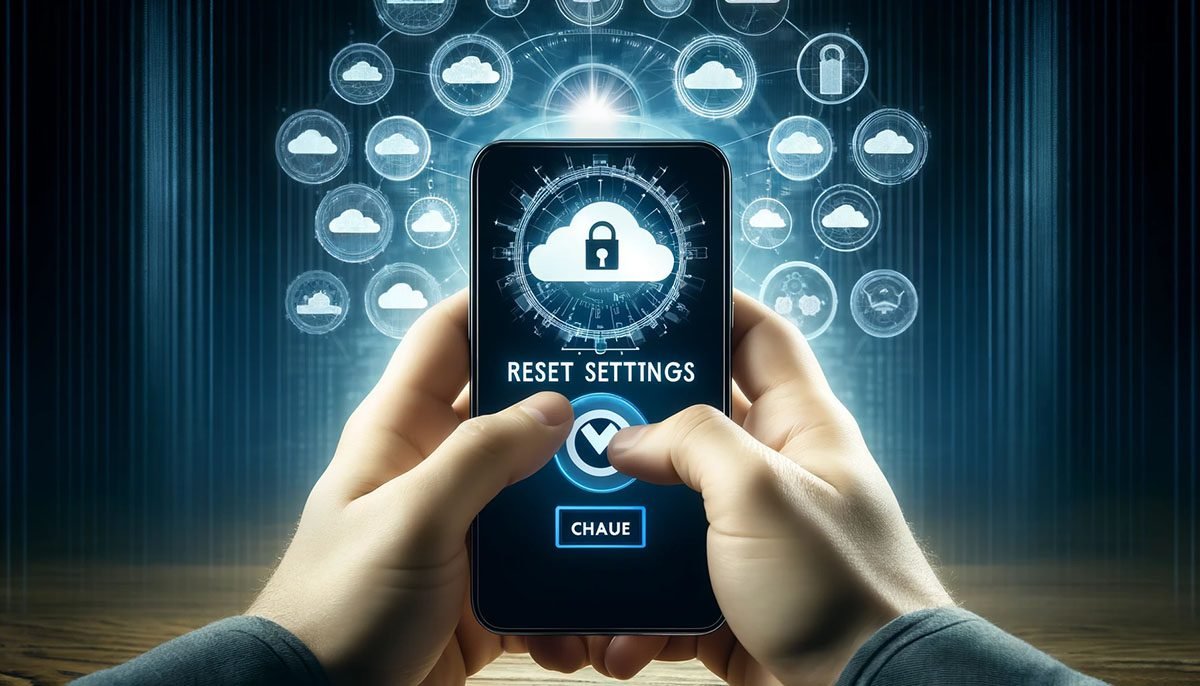Reset End-to-End Encrypted Data: A Comprehensive Guide

Introduction
In our increasingly digital world, safeguarding personal and sensitive information is paramount, and end-to-end encryption is at the forefront of this battle. Using the best premium VPN can further enhance your online security and privacy. However, sometimes you need to reset end-to-end encrypted data. This could be due to upgrading to a new device, recovering from a data breach, or resolving technical issues like data corruption. This article is a comprehensive guide detailing why, when, and how to reset your encrypted data to maintain privacy and security effectively.
Understanding End-to-End Encryption
End-to-end encryption is the gold standard for privacy in communications, ensuring that only the sender and receiver can access the messages exchanged, with no possibility for intermediaries to decrypt the content in transit. This encryption method is crucial in many modern applications, such as WhatsApp, Signal, and secure email services. Understanding the implications of resetting encrypted data is key, particularly how it affects data integrity and confidentiality. It’s about controlling who can access your information and under what circumstances.
Reasons to Reset End-to-End Encrypted Data
Resetting encrypted data is a significant step, typically undertaken in specific scenarios:
- Potential data corruption: Software glitches or hardware failures can corrupt data, making it unreadable.
- Device changes: Switching to a new phone or laptop often necessitates transferring and resetting data to ensure it remains secure.
- Security breaches: Following a security compromise, resetting encrypted data can help secure accounts and prevent unauthorized access.
Ignoring these signs and failing to reset encrypted data when necessary can lead to increased risks of data leakage and privacy breaches.
Preparing to Reset Your Data

The process of resetting your encrypted data should begin with comprehensive preparation to ensure data safety:
- Backup your data: Utilize encryption-supported platforms like Google Drive or iCloud to create secure copies of your information.
- Verify data integrity: Check that your backup includes all necessary files and can be opened without issues.
- Secure your backups: Protect your backup with strong encryption and complex passwords, and consider enabling two-factor authentication for an added layer of security.
Step-by-Step Guide to Reset End-to-End Encrypted Data
Depending on your device, the steps to reset encrypted data may vary slightly. Here is a detailed guide for the most common platforms:
For iOS Users
- Backup your data: Use iCloud or iTunes to ensure all your data is safely backed up.
- Navigate to reset settings: Go to “Settings,” select “Erase All Content and Settings,” then tap “General” and “Reset.”
- Restore your device: Once the reset is complete, restore your iPhone from the backup to regain access to your data.
For Android Users
- Backup your data: Google Drive can back up your data securely.
- Perform the reset: Go to ‘Settings,’ select ‘System,’ tap ‘Reset Options,’ and choose ‘Erase all data (factory reset).’
- Restore your data: You can use the earlier backup to get your data back after the reset.
For Windows Users
- Backup your files: Utilize OneDrive or an external hard drive to secure your data.
- Initiate the reset: Access ‘Settings,’ click on ‘Update & Security,’ select ‘Recovery,’ and then ‘Get started’ under ‘Reset this PC.’
- Opt to remove everything: During the reset, choose to erase and restore all your data from your backup.
Troubleshooting Common Issues
Issues such as data not being restored correctly or encryption errors might occur during resetting. To address these:
- Verify backup integrity: Double-check that your backup is complete and uncorrupted.
- Update your systems: Ensure all software on your device is up-to-date to avoid compatibility issues during restoration.
Best Practices for Managing End-to-End Encrypted Data Post-Reset
Once your data is reset and restored, adopt these best practices to ensure ongoing security:
- Regularly update your passwords: Use complex passwords and change them periodically.
- Conduct regular data audits: Review your data and encryption settings to ensure everything is secure and up-to-date.
Conclusion
It is essential for anyone who is concerned with maintaining digital security and privacy in our increasingly connected world to have a solid understanding of how to reset end-to-end encrypted data. This guide thoroughly explains all the steps and factors needed to handle this delicate operation safely. As our digital footprints expand, so does the importance of carefully managing our encrypted data. Following these instructions will help ensure that your data stays secure, even when it becomes necessary to reset it. To protect your personal information effectively, you must maintain a vigilant and proactive approach to digital security.
FAQs
Q1: What is end-to-end encryption?
A1: End-to-end encryption (E2EE) is a secure communication protocol where only the communicating users can read the messages. It encrypts the data on the sender’s device. It only decrypts it on the receiver’s device, preventing middlemen, including internet providers and application servers, from accessing the sensitive data during transmission.
Q2: Why would someone need to reset end-to-end encrypted data?
A2: Someone might need to reset end-to-end encrypted data for several reasons, including resolving issues with data corruption, preparing a device for resale or transfer to another user, or, most crucially, mitigating the impact of a data breach or security compromise where sensitive data might have been exposed.
Q3: What are the risks of not resetting encrypted data when needed?
A3: Failing to reset encrypted data when needed can lead to ongoing security vulnerabilities, potential data loss, and continued access for unauthorized users, especially after a device theft or security breach. This neglect can compromise personal and professional security and privacy.
Q4: How do I back up my data before resetting?
A4: To back up your data securely before performing a reset, use an encrypted backup service relevant to your device. For instance, iPhone users can use iCloud, Android users can use Google Drive, and Windows users might opt for OneDrive or an external hard drive. Ensure that these backups are encrypted and protected with strong passwords and, if possible, two-factor authentication.
Q5: What is the general process to reset end-to-end encrypted data on a smartphone?
A5: The general process involves several key steps: first, backing up your data securely; second, navigating to the reset options in your device’s settings; third, selecting the option to erase all content and settings; and finally, restoring your device from the backup to ensure all personal data is reloaded onto the device securely.
Q6: What should I do if my data doesn’t restore correctly after a reset?
A6: If your data doesn’t restore correctly, ensure your backup is complete and not corrupted. Check if the backup file opens correctly on another device or via a web interface. If problems persist, consider using specialized data recovery tools or contacting customer support for your device or a backup service provider for professional assistance.
Q7: How often should I reset my encrypted data?
A7: Resetting encrypted data should be done only with necessity. It’s recommended to reset encrypted data when changing devices, after a security breach, or if there are significant updates or changes in encryption protocols or security settings to ensure data integrity and protection.
Q8: What precautions should I take after resetting my encrypted data?
A8: After resetting your encrypted data, re-establish all security settings, update your passwords, and, where applicable, re-enable encryption settings across your apps and services. Regularly review security protocols and consider additional layers of security, such as biometric locks and secure VPNs, for enhanced protection.
Q9: Can resetting encrypted data affect my app functionalities?
A9: Resetting encrypted data can temporarily affect app functionalities, especially if these apps rely on specific configurations or data stored on your device. Re-authentication will be required on most services, and you may need to reconfigure apps according to your preferences.
Q10: What steps can I take to ensure my encrypted data remains secure after a reset?
A10: To ensure your encrypted data remains secure post-reset, continuously update and patch your operating system and applications to protect against vulnerabilities. Employ robust antivirus and anti-malware solutions, and educate yourself about phishing and other forms of cyberattacks. Regularly audit your device and app security settings to align with best practices in digital security.
For more insightful articles, please visit Home.
